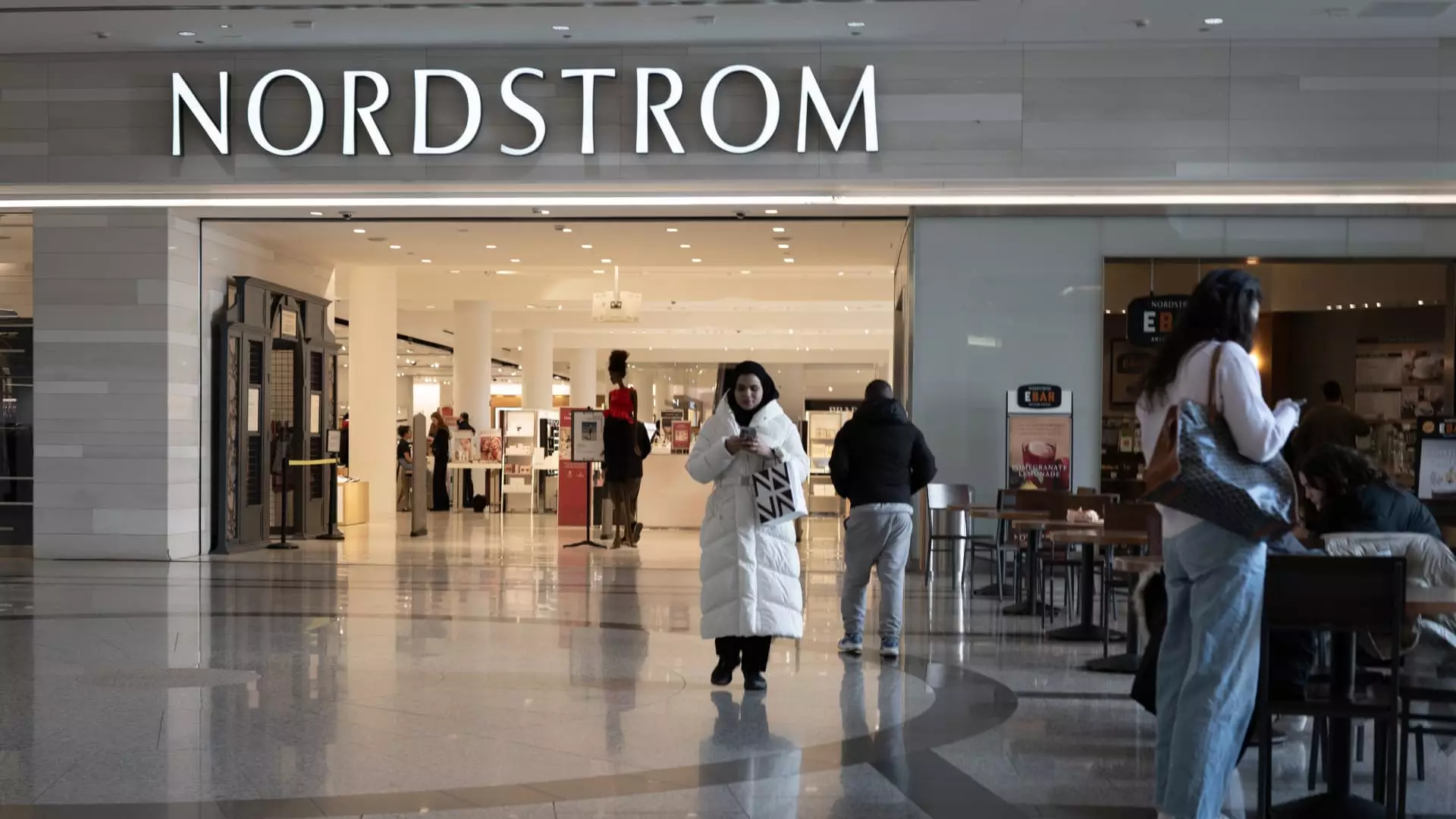Nordstrom Inc. has recently reported its third-quarter earnings, showcasing a revenue growth of approximately 4% year over year, surpassing the expectations set by Wall Street. This growth can be attributed to a surge in consumer spending in categories like clothing, footwear, and activewear across both its primary department store and the Nordstrom Rack off-price chain. Despite these positive indicators, the Seattle-based retailer is adopting a reserved outlook for the remainder of the year, reflecting a cautious sentiment as it prepares for the key holiday shopping season. The company’s forecast suggests that full-year revenue will remain flat or see an increase of up to 1%. This outlook contrasts with a prior forecast indicating a decline of 1% to a rise of 1%, showcasing a nuanced shift towards optimism tempered by concerns about spending patterns.
In his comments following the earnings report, CEO Erik Nordstrom highlighted the impact of targeted strategies aimed at appealing to discerning consumers. Notably, sales of women’s apparel and activewear surged by double digits, while categories like shoes, men’s wear, and children’s clothing showed respectable growth in the mid-to-high single digits. This positive performance, however, met with caution as Nordstrom noted a marked decline in sales trends towards the end of October. Such observations have raised eyebrows as they directly influence holiday sales expectations, with the CEO indicating that this slowdown has been incorporated into their forecasts.
The results from Nordstrom’s fiscal third quarter, which ended on November 2, illustrate a critical aspect of their business model. The company reported earnings per share of 33 cents adjusted, not immediately comparable to analysts’ estimates, against a backdrop of net income of $46 million, down from $67 million in the previous year. While the revenue rose to $3.46 billion, exceeding the anticipated $3.35 billion, the decline in earnings reflects broader market challenges. These results emphasize the delicate balance between achieving revenue growth and managing overall profitability in an evolving retail landscape.
Nordstrom’s growth in sales is particularly significant given the more extensive pressures faced by retailers in the discretionary merchandise and luxury goods segments. Major players in the retail sector, including Walmart, Best Buy, and Target, have reported a cautious consumer base focused more on essential purchases than on luxury or indulgent items, indicating a shift in spending habits. In light of this environment, Nordstrom’s performance is noteworthy, especially considering the calendar-related challenges posed by its Anniversary Sale. This prominent sale, crucial for revenue generation, was compressed into just one day for this quarter compared to eight days in the previous year, leading to an estimated negative impact on sales figures of about 1%.
The comparison with Macy’s is illuminating; while Nordstrom’s comparable sales grew by 4%, Macy’s reported a decline of 2.4%, indicating that Nordstrom’s strategies have yielded more favorable results in a competitive landscape.
Nordstrom’s commitment to its off-price brand, Nordstrom Rack, has proved beneficial as it looks to stimulate sales growth through new store openings and customer acquisition. As the company concluded the quarter, it had opened 23 new Rack locations, conforming to a long-term strategy of expanding by approximately 20 to 25 stores annually. Notably, the comparable sales between the two chains showed minimal divergence, with the primary store up by 4% and Nordstrom Rack slightly lagging at 3.9%.
E-commerce, continuing to be a significant driver of growth, witnessed a 6.4% increase year over year. Digital sales now represent about one-third of total sales, underpinned by enhancements to the website and mobile app, making shopping more accessible and user-friendly. The introduction of features such as online order fulfillments and the buy-online-pickup-in-store options also reflects Nordstrom’s efforts to innovate and improve the online shopping experience.
As Nordstrom braces for the critical holiday season, its recent performance and the strategies laid out by management indicate a blend of optimism and realism. While the positive sales figures from the quarter reflect successful measures taken to engage consumers, the noted decline at the end of October raises important questions regarding future consumer behavior. As the landscape tightens and choices become limited, retailers must not only fine-tune their operations but also remain agile in responding to shifting consumer sentiments.
The company also faces a decision on its ownership structure as its founding family has made a bid to take Nordstrom private, which may alter the strategic landscape entirely. The coming months will be crucial as Nordstrom navigates these multifaceted challenges, leveraging its strengths while also preparing to make necessary adjustments in response to marketplace dynamics. In an era marked by heightened competition and changing consumer preferences, staying attuned to customer needs will be essential for maintaining momentum and growth.

